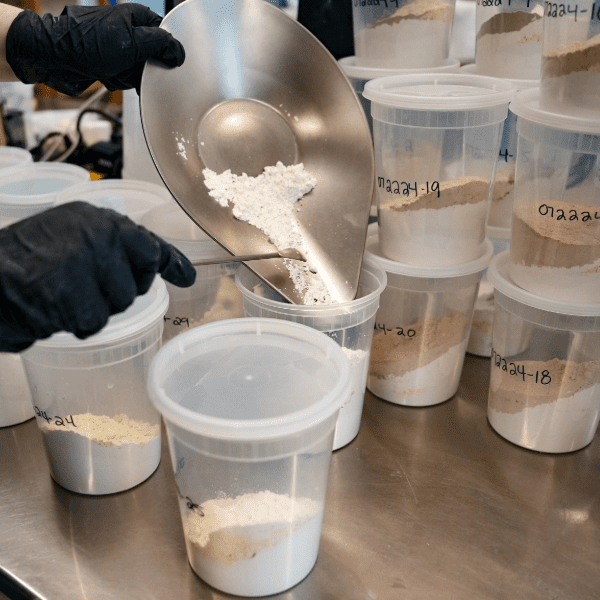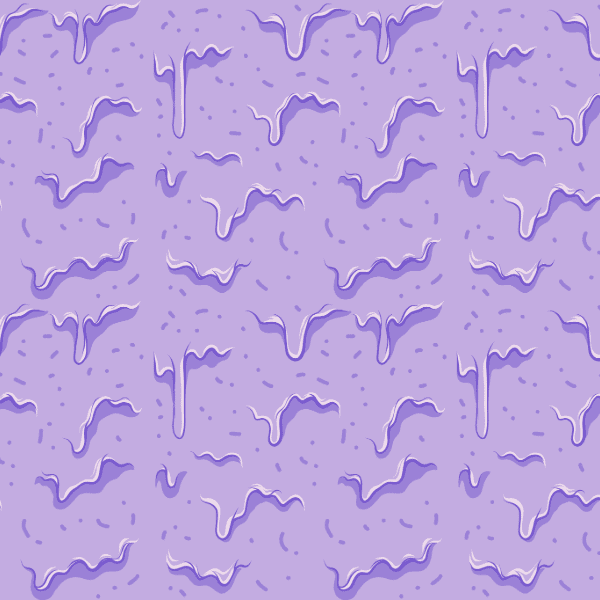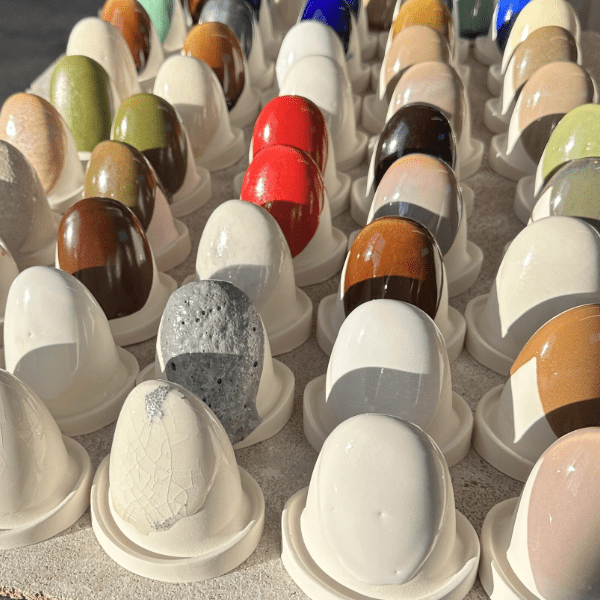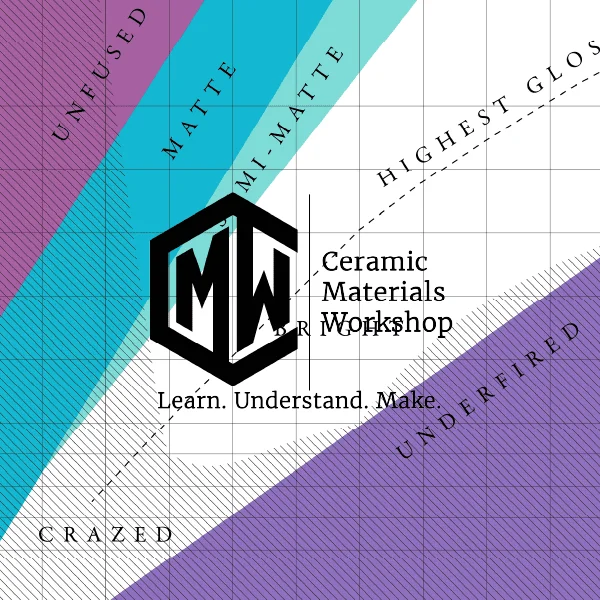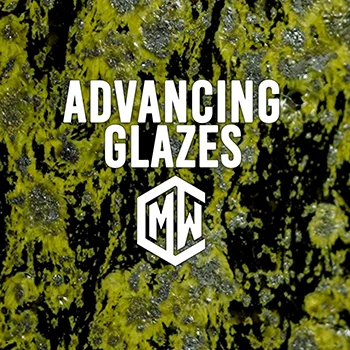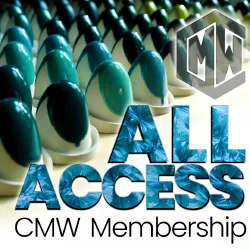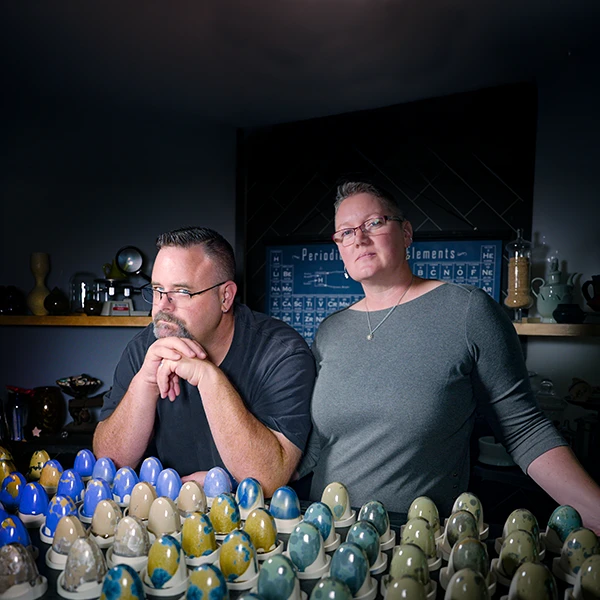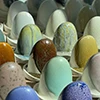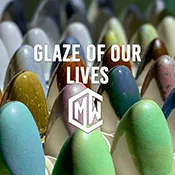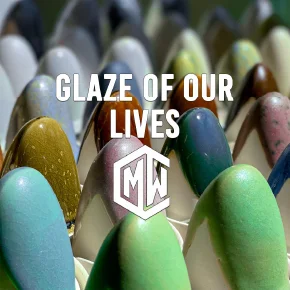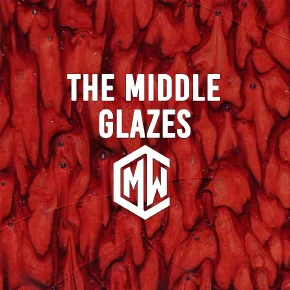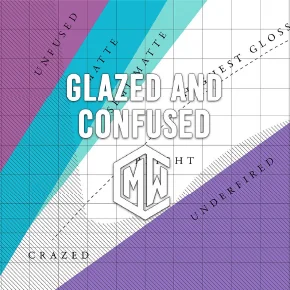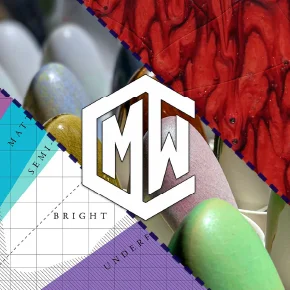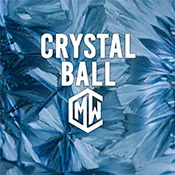A Guide for Safe and Confident Glazing
Have you ever stared at a bottle of ceramic glaze, baffled by the cryptic symbols and technical jargon? You’re not alone! Navigating the world of glazes can be daunting, especially when it comes to deciphering safety labels. Phrases like “Food Safe” and “Non-Toxic” float around, but what do they actually mean?
Don’t worry, CMW is here to guide you and break it down in simple terms.
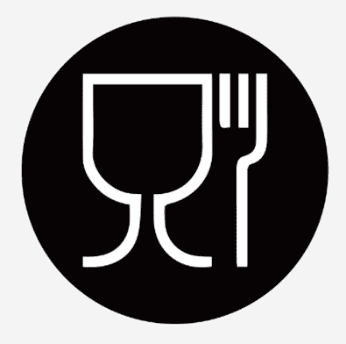
Food Safe
This one’s a biggie, look for the wine glass and fork symbol. Food safe in the United States is defined by the FDA through the Compliance Policy Guide. CPG 545.400 and CPG 545.450 set standards for allowable cadmium and lead concentrations, respectively.
It means the glaze, if used as directed by the manufacturer, won’t leach harmful lead or cadmium into your food.
This doesn’t guarantee it’s scratch-proof or dishwasher-friendly, though.

Allowable limits for lead and cadmium per CPG 545.450 and CPG 545.400, respectively, and tested per ASTM C738 are shown in the figure above.
Dinnerware Safe
This goes beyond just not being toxic. A “Dinnerware Safe” glaze is not only food-safe but also smooth and durable. No spaces for bacteria to hide in! Imagine worry-free meals with beautiful, safe dishes.

To be sure a glaze is safe for dishes, it needs to be tested against the specific clay it’ll be used on to qualify the glaze as dinnerware safe. Thermal expansion mismatch will cause crazing, which qualifies. Safe glazes are like good friends: They blend well with the clay and don’t fight!
How can I measure thermal expansion? | For Flux Sake Episode 92
From the FDA’s 2022 Food Code 4-101.11 Characteristics:
Materials that are used in the construction of utensils and food-contact surfaces of equipment may not allow the migration of deleterious substances or impart colors, odors, or tastes to food and under normal use conditions shall be:
(A) Safe
(B) Durable, Corrosion-Resistant, and nonabsorbent
(C) Sufficient in weight and thickness to withstand repeated warewashing
(D) Finished to have a smooth, easily cleanable surface; and
(E) Resistant to pitting, chipping, crazing, scratching, scoring, distortion, and decomposition
Basically, the FDA wants to make sure all food-touching surfaces are safe, strong, and cleanable!
Cut to the point! How do I make ceramic bakeware? Listen to CMW’s podcast For Flux Sake, Episode 86 | How do you makie ceramic bakeware?
Non-Toxic
Non-toxic indicates the glaze doesn’t contain harmful chemicals in high enough amounts to cause immediate or long-term health problems when used properly. This means that the liquid glaze itself won’t harm you if used according to the instructions of the manufacturer.
Imagine a “safe to touch” label, not a “safe to eat off” one. That’s the essence of “non-toxic” for ceramic glazes. While it won’t directly harm you, it might not be suitable to use on surfaces that come into contact with food.

There are two main standards you might see on ceramic glaze labels: ASTM C-1023 is the “Standard Practice for Labeling Ceramic Art Materials for Chronic Adverse Health Hazards” and ASTM D-4236 is the “Standard Practice for Labeling Art Materials for Chronic Health Hazards.”
These standards primarily focus on artist-sized materials, not industrial glazes or large quantities.
It doesn’t define specific tests for assessing chronic health hazards. The responsibility for safety ultimately falls on the user. They also don’t claim to cover every single safety concern related to using the materials. It’s up to you to research further and take appropriate precautions.
These standards provide a framework for manufacturers to disclose potential health risks, but they don’t guarantee complete safety or eliminate the need for personal research and caution.
Other Labels
While “non-toxic” might sound reassuring, it doesn’t necessarily mean the glaze is safe for food or children. That’s where AP and CL seals come in. They offer more specific guidance:

AP (Approved Product): This means a medical expert has examined the glaze and determined it doesn’t contain harmful chemicals in significant amounts to cause acute or chronic health problems, even for children. Think of it as a “safe for all ages” stamp of approval.
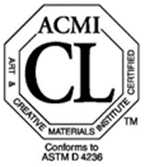
CL (Cautionary Labeling): This seal indicates the product has been reviewed by a medical expert and received proper labeling. However, it’s not suitable for children under 12. Think of it as a yellow caution flag, urging extra care around younger hands.
While safety labels provide valuable information, ultimately, the responsibility for safe ceramic practices lies with you. By learning to read and interpret labels, you empower yourself to make informed choices and ensure your passion for ceramics doesn’t come at the expense of your well-being.
Remember, you deserve to understand what you’re working with, to create without fear, and to fill your home with pieces that are both beautiful and safe.
Still Curious?
CMW’s Podcast, For Flux Sake, Episode 60 | What are those symbols on my glaze label? On this episode the gang talk about deciphering the labels on your commercial glazes. They also answer listener questions about standard bisqueing temperatures in the U.S., and if there is a toxicity risk when using lead glazed wares from the 19th century
Ready to dive deeper?
Loved learning about ceramic glazes? Want to go even deeper? Check out our Workshops & Courses, now available in Spanish, or YouTube Channel where Matt breaks it all down, myth-busting and Stull chart included!


